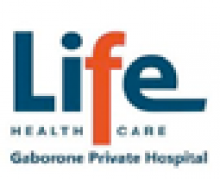- Kneel beside the patient. Place the heel of one hand in the centre of the chest on the nipple line (imaginary line joining the two nipples) on the breastbone. Place the heel of your other hand on top of the first hand. Lean over the victim with your arms straight and elbows locked, and your shoulders directly above your hands. Press down vertically on the victim's breastbone 4-5 cm to a count of "one-and-two-and-three-and-four...” giving one push each time you say a number. When saying "and", release the pressure but do not move your hands from their location on the chest. Give 30 pumps at a rate of 100 per minute. Push hard and push fast.
- Then give 2 slow breaths.
- Repeat the cycle of 30 pumps and 2 breaths until help arrives or the patient starts to recover. If you are not sure that the patient is breathing unaided, continue with CPR. Is it not always obvious when someone has started to breathe unaided; they may be breathing but not well enough.
- Even if the patient appears to have fully recovered, stay with them and monitor them closely until medical help arrives.
- The American Heart Association (AHA) recommends a compression-to-ventilation ratio of 30:2 for all lone (single) rescuers to use for all patients from infants (excluding newborns) to adults. This recommendation applies to all lay rescuers and to all healthcare providers who perform 1-rescuer CPR.
- For lay rescuers who have not been trained in CPR, or who have received training but feel uncertain about or unwilling to perform ventilation, the AHA recommends performing compression-only, or "hands-only" CPR i.e. pumping the chest at a rate of 100 compressions per minute until emergency help arrives.
Health24, updated April 2008
Reviewed by Dr Cleeve Robertson, Head, Metro Emergency Medical Services Western Cape









